Kraków

Southern Polish city on the banks of the Vistula

Poland is leading the way for the countries of New Europe, as much of the old Eastern Bloc surges out of the Cold War and into the 21st century. Two world wars rolled across Poland’s countryside and there is much remaining physically and emotionally. The borders shifted east and west, but since the 1990s and particularly since joining the EU, Poland is looking towards a bright future. Kraków itself was formerly the Polish capital, and was founded no later than the 10th century. As it was quickly occupied by the Germans during the Second World War, Kraków didn’t sustain as much bombing as other occupied cities, however a large section of the population suffered a far worse fate in the nearby concentration camps. Since the fall of communism and the advent of budget airlines, Kraków quickly emerged on the tourist scene and has been booming ever since.
It was a family trip to Krakow in late 2014 that was my first foray into this part of Eastern Europe, for a family wedding uniting Scotland and Poland. Either we were lucky with the weather, or it’s always that way in the autumn as there were warm, sunny days for much of the trip. As it was a celebratory visit, we elected to steer clear of Auschwitz which we felt would not have been appropriate to visit at that time. We did however have ample time to explore the city, including the incredible Wieliczka Salt Mines nearby. However, an opportunity to explore the communist utopian city at Nowa Huta by Trabant unfortunately didn’t come to pass, as we couldn’t all fit inside one.

Wawel Castle on the banks of the Vistula River is the old fortified centre of Krakow, and a very grand place indeed. Built in the 14th century and remodelled over hundreds of years, it now houses an art gallery and museum. Our hotel for the week, the Sheraton, was just along the riverside from here.
The Main Square of Krakow’s Old Town, or Stare Miasto as it is locally known. The whole old town is a World Heritage Site, and it’s clear to see why. Underneath the town square is a comprehensive modern exhibition of the town’s history.


A tourist poses with the colourful Krakow sign in the main square, outside the Cloth Hall, the Renaissance centrepiece of the square.
Inside the Cloth Hall, which now serves as a market place selling all sorts of souvenirs and bric-a-brac. It wasn’t always this way, as the Cloth Hall was built as a major trading centre in the 15th century and dealt with all manner of commodities from far and wide.


Horses and drivers line the main square, ready to take tourists for a trot.
An altogether more elegant form of horse-drawn transport, if it were possible, can be seen in amber at one of the city’s many amber shops.


The Church of Saints Peter and Paul, on Grodzka leading up to the main square. It is the largest church in Krakow and was built in the early 17th century. I like this photo particularly for the texture of the sky, and the lined up statues in front of the church. Another Peter and Paul place I have visited is the fortress by that name in Saint Petersburg.
Karol Jozef Wojty or Pope John Paul II as he was latterly known, was of course Polish and turned around the eponymous phrase regarding a Pope’s nationality. He was born in Wadowice, not far from Krakow, and served as Pope from 1978 until 2005. I was fortunate enough to see him in person in the Vatican just a few months before he died.

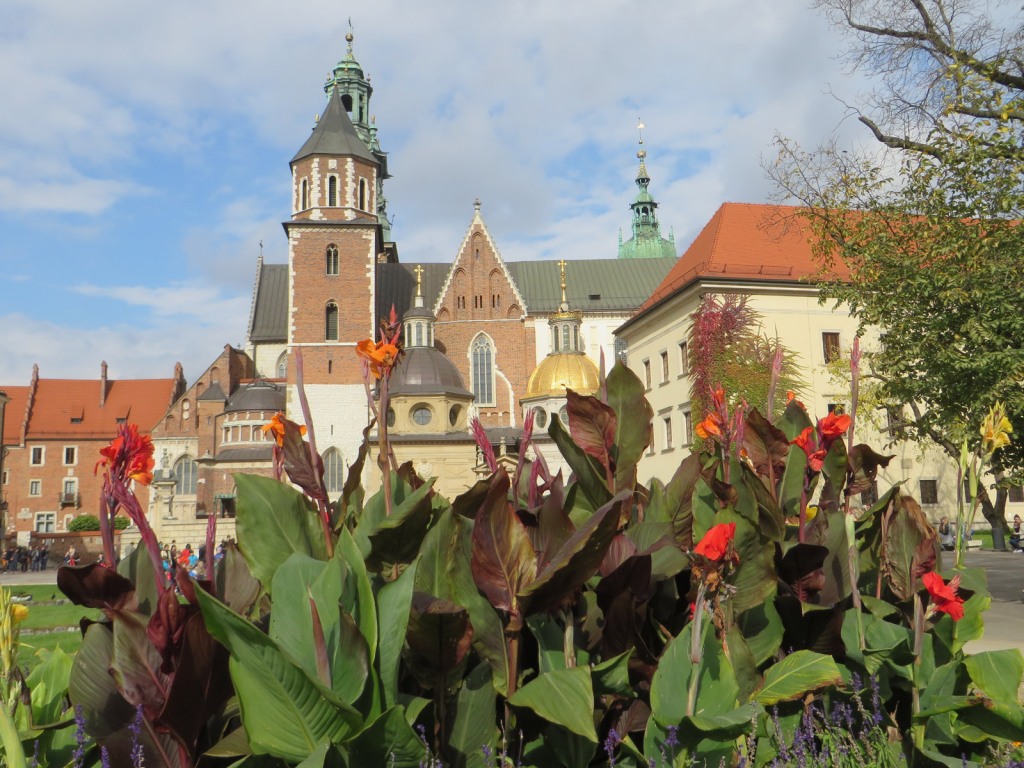
Inside Wawel Castle the grounds are kept very pretty and we sat in a café for a while in the sun. Among other works, the museum was exhibiting Leonardo da Vinci’s Lady With An Ermine, one of only four female portraits he painted, along with the Mona Lisa in Paris.
We also visited the Collegium Maius, part of the Jagiellonian University, Poland’s finest. It was here that Nicolaus Copernicus studied, using such instruments as the Globus Jagellonicus seen here, the oldest surviving globe to represent the Americas, dating from 1510.
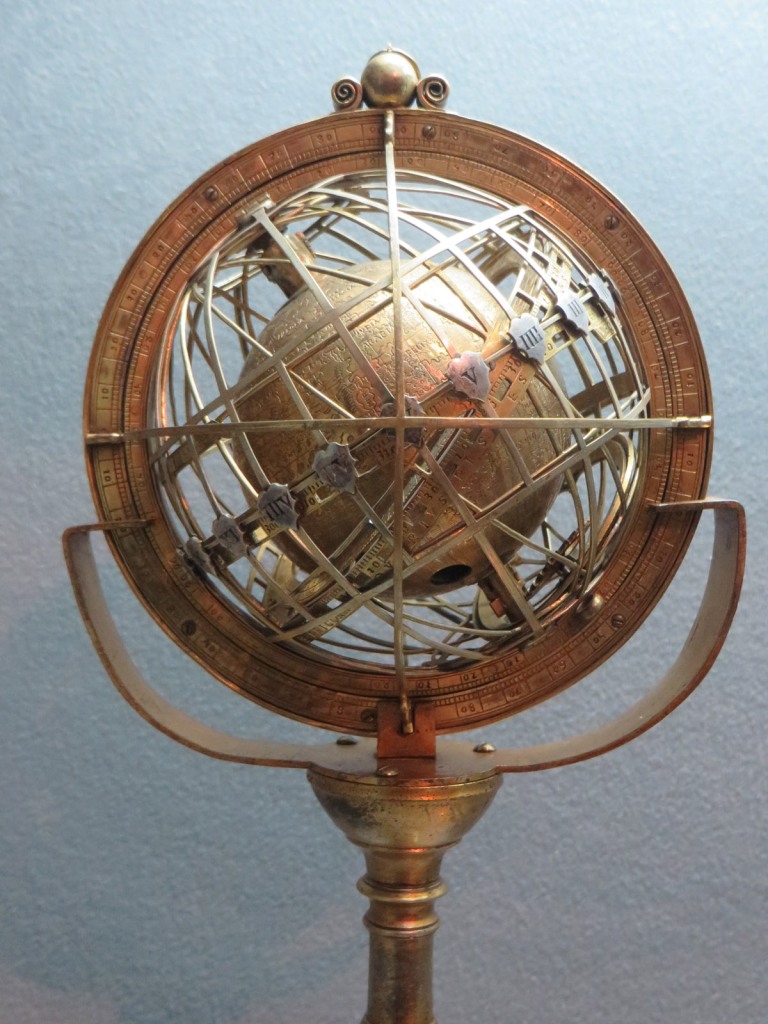

The Church of St Joseph stands as a stark landmark on the south side of the Vistula. Despite its old appearance, it was built just after the turn of the 20th century. I took this as we were walking a circuit around the river near the old town.
The Vistula river wends around the south of the old town of Krakow, and is flanked with substantial embankments to contain it after heavy rains. Further downstream it flows through the capital Warsaw, before discharging into the Baltic Sea at Gdansk.


Krakow’s Jewish Quarter was all but decimated during the war, with most of its population being holed up in the walled ghetto south of the river, and ultimately taken to Auschwitz or Plaszow. The recovery has been slow, but there is a small community building up again in Kazimierz. We went to this restaurant for dinner.
Oskar Schindler, the German industrialist, ran this factory in Krakow during the war. By recruiting workers from the nearby Jewish ghetto, he was able to prevent the deportation of over one thousand to the concentration camps. The story was portrayed in Steven Spielberg’s 1993 film Schindler’s List.
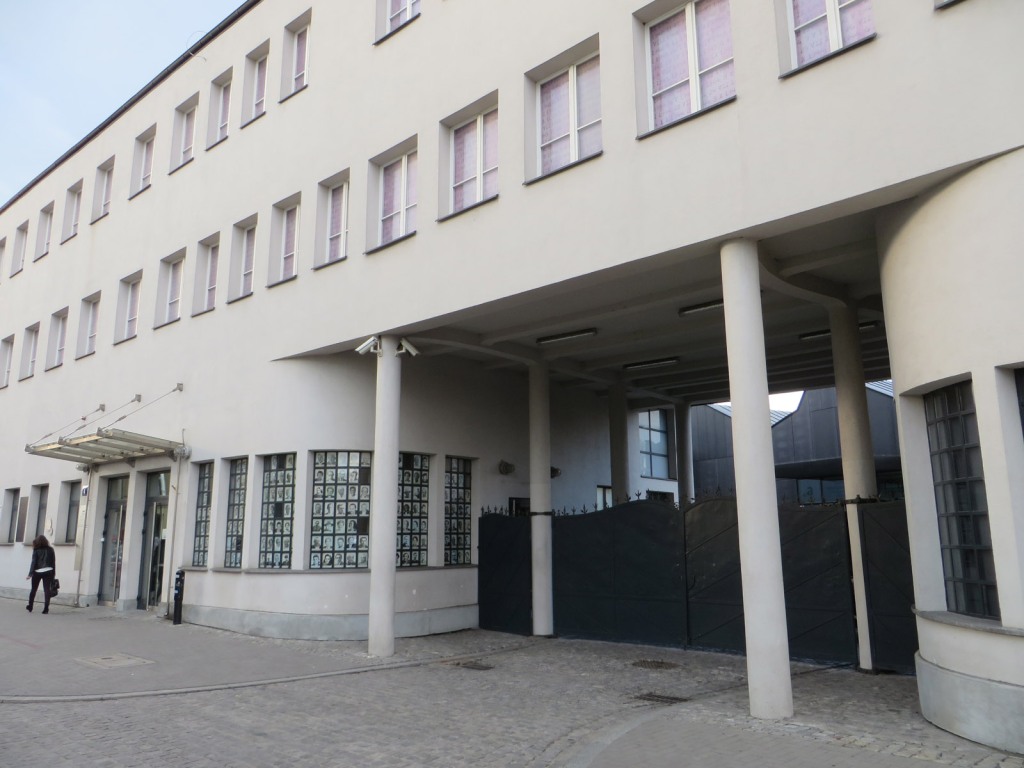

The Kraków Ghetto has been reintegrated as part of the city, however some of it is still in a state of disrepair. From this square the residents were deported at the liquidation in 1943. Each memorial chair represents one thousand people.
In the town of Wieliczka outside the city, is one of the world’s largest and oldest salt mines. We entered by walking down wooden stairs in a shaft descending 64 metres underground, before following a series of tunnels over two miles until we were twice as far underground.

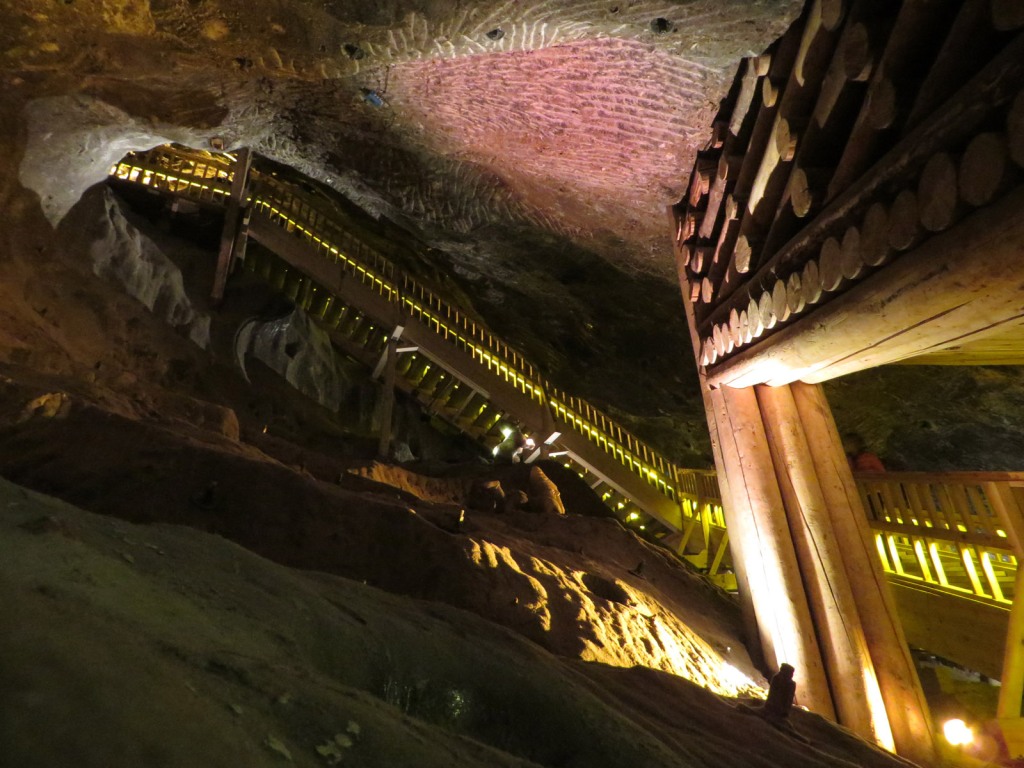
The salt mine dates back to the 13th century and operated until 1996. It was amazing to see the complex structural woodwork and walk through tunnels built hundreds of years ago.
Throughout the mine are various statues and carvings all cut from rock salt, and produced by the miners themselves. This regal chap looks as if he’s just stepped out of a dwarf mine in Lord of the Rings.
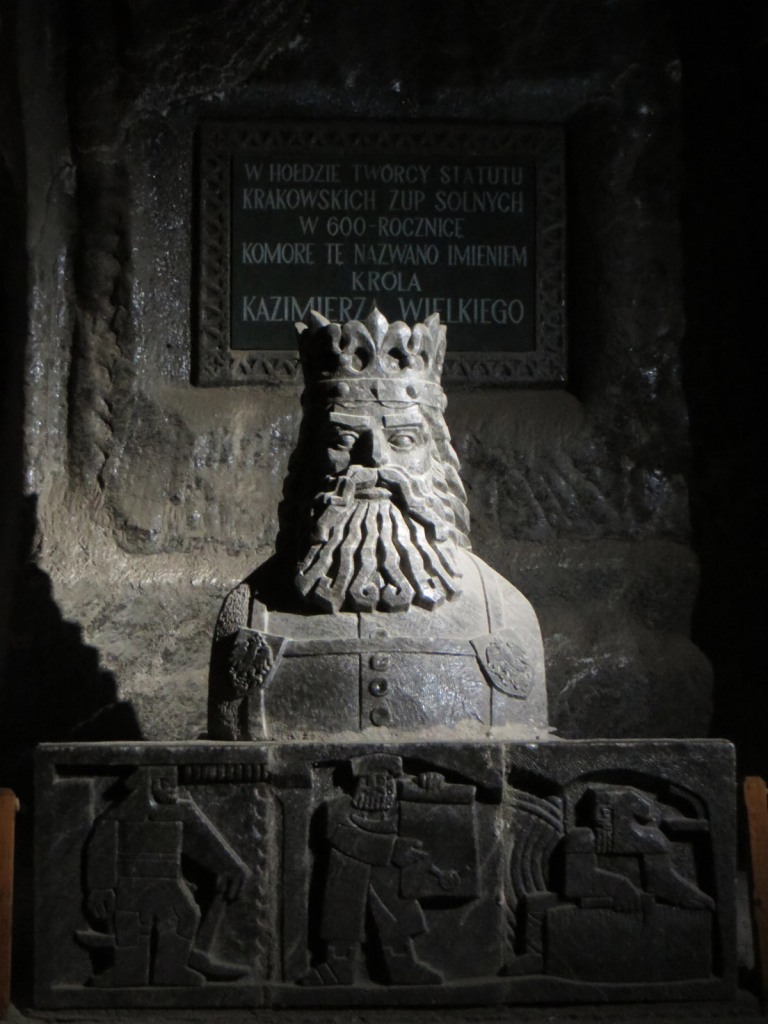
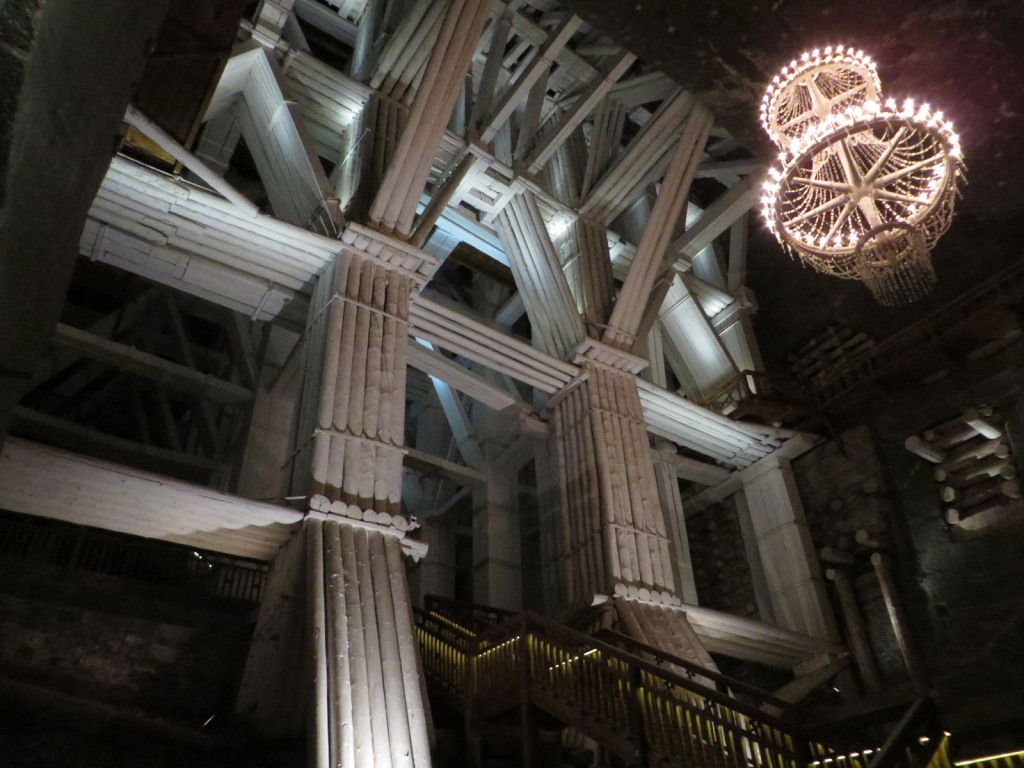
A giant chamber deep underground, lit by rock salt chandeliers. While the tour took all afternoon, we explored only a fraction of the mine’s corridors, which stretch over one hundred miles and descend over one thousand feet below ground.
Salty artworks abound in the mine, my favourite was this representation of Leonardo’s Last Supper, complete without the doorway cut through it, as is the case with the original in Milan.


Parts of the mine are flooded, in this case deliberately so, with a walkway hanging over the serene but very deep pool below. Part of the tour included boarding a boat to pass through a tunnel between chambers.
Where the mine has been flooded in the past but since drained, large salt crystals have formed on the structural supports. Presumably these are made of wood, as iron wouldn’t last very long!
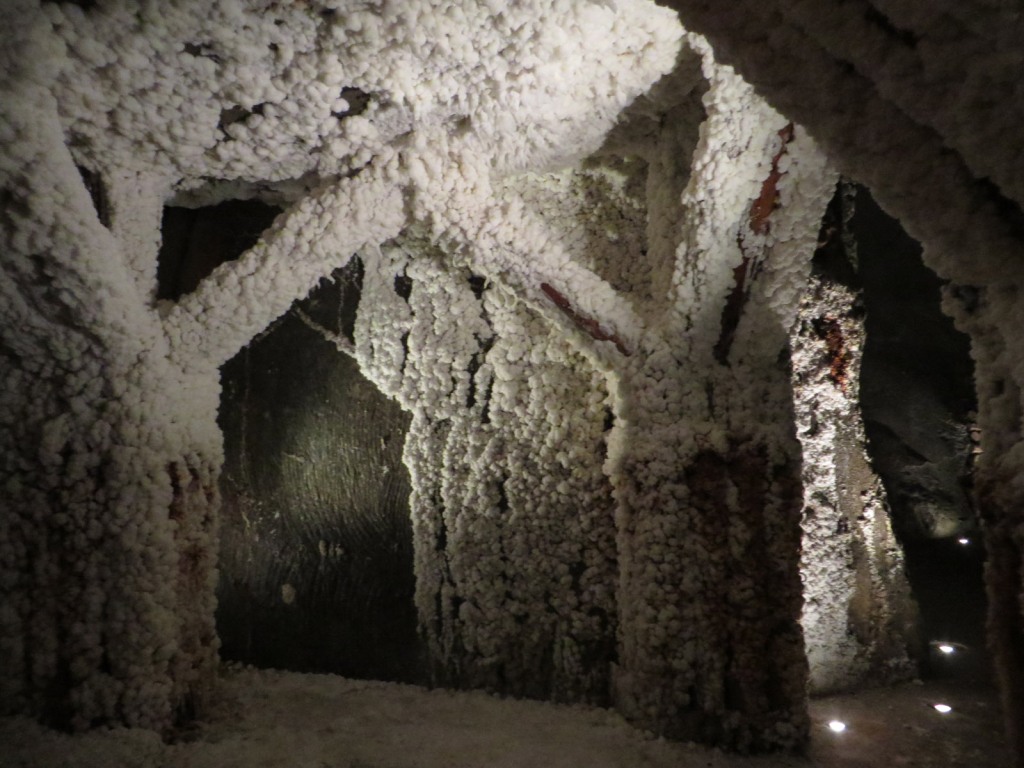

Several examples of massive wooden machinery remain deep underground, some of which was driven by horses, others by humans.
Back in Kraków city, a historic beer truck leaves us in no doubt as to what’s offered by this establishment.


Walking back to our hotel along an atmospheric leafy lane. This is a stretch of the park that encircles the old town completely.
Created 2015 | Updated 2024
